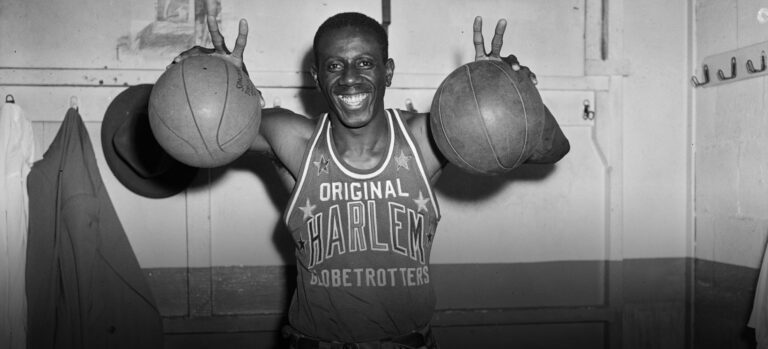For nearly a century, the Harlem Globetrotters have brought flair and antics to the game of basketball. The team has played to more than 148 million people, in more than 26,000 exhibition games in 124 countries and regions.
The Harlem Globetrotters began in 1926 as the Savoy Big Five, an African-American basketball team that came primarily from Wendell Phillips High School on Chicago's South Side.
They first played under the banner of the South Side's Giles Post of the American Legion, then became known as the Savoy Big Five after Chicago's Bronzeville's Savoy Ballroom hired the group to play as pre-prom entertainment. To Midwest audiences, the game of basketball was still new and, early on, this team brought an entertaining style of play to the sport.
Seizing a golden opportunity, sports promoter Abe Saperstein bought the team and became manager and coach. Saperstein, a short Jewish man from Chicago's North Side, even filled in at times when a team member was sick or injured.
They played their first road game in Hinckley, Illinois on January 7, 1927. Eager to advertise the team's unique roster, Saperstein changed their name in 1930 to the Harlem Globetrotters to associate the team with the neighborhood known as the Black Mecca Civilization. Despite the name, the Harlem Globetrotters didn't actually play a game in Harlem until 1968.
Before they were known for their on-court antics, the Globetrotters were highly competitive in professional basketball and introduced a flashy, schoolboy style of play. They posted the slam dunk, the fast break, emphasized the forward and point guard positions, and the eight weave.
In 1940, the team captured the World Professional Basketball Tournament title. Even as they introduced tricks and comedy into their game, the Globetrotters remained competitive. In 1948, the team defeated the Minneapolis Lakers, champions of the all-white National Basketball League, the precursor to the National Basketball Association (NBA).
Not only were the Globetrotters innovative in their style of basketball, but they were pioneers as an African-American team that broke barriers when the professional ranks were racially segregated. Jim Hornwho played for the Globetrotters for five years during the 1950s, remembers the racial oppression the team endured.
Executive Order 9981: Desegregation of the US Armed Forces
“I faced segregation in the military. “When we were traveling, the signs said, 'Colored people eat in the back,'” says Horne. “But when I played with the Globetrotters it was completely different because we were entertaining people and still faced less than people. In the South, we couldn't eat in most places and had to stay in the worst hotels. Coming from Buffalo, New York, it was a rude awakening. It was difficult in those days.”
Throughout its storied history, the team has featured legendary players such as Reece “Goose” Tatum, Marques Haynes, Meadowlark Lemon, Fred “Curley” Neal, “Wee” Willie Gardner, Nat “Sweetwater” Clifton, Wilt “The Stilt”. Chamberlain, Connie “The Hawk” Hawkins and Lynette Woodard, the first woman to play on the team. In 1982, the group received the ultimate recognition for their role as entertainers: a star on the Hollywood Walk of Fame.















